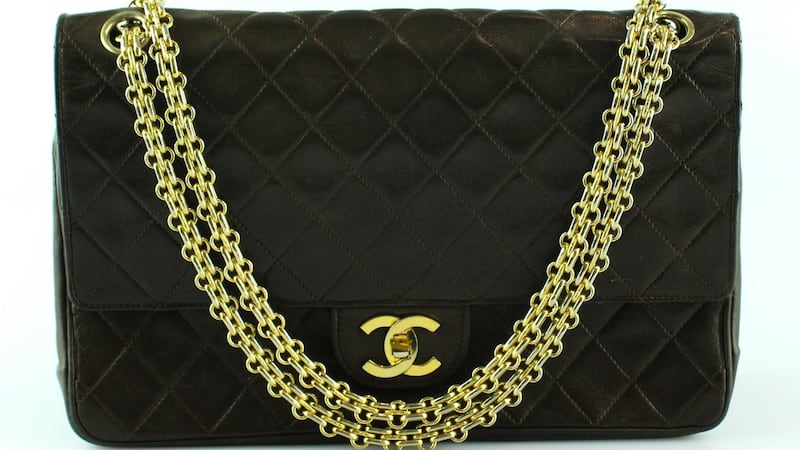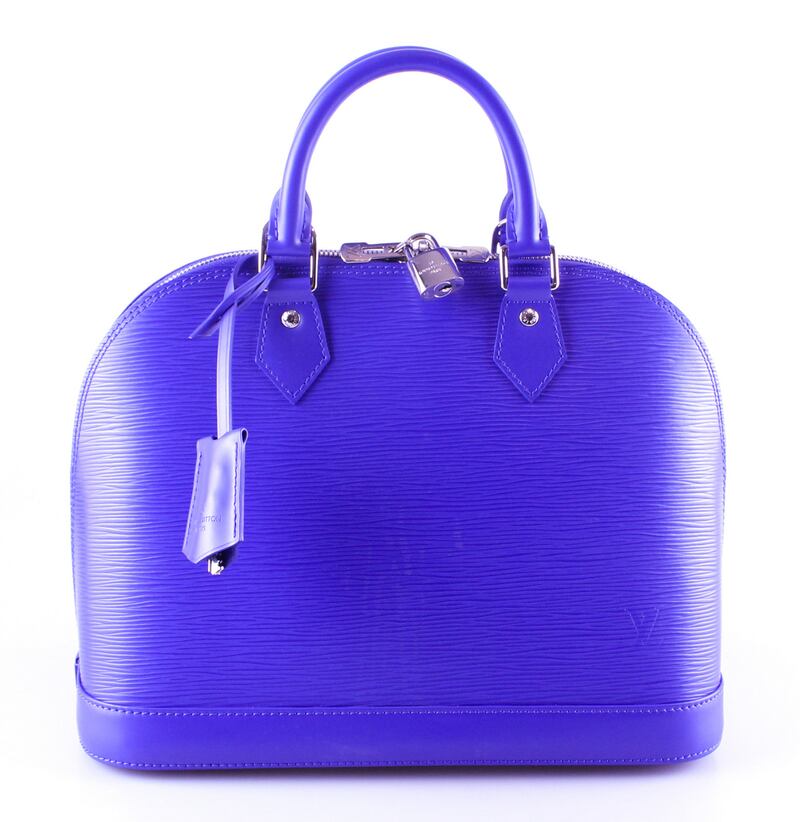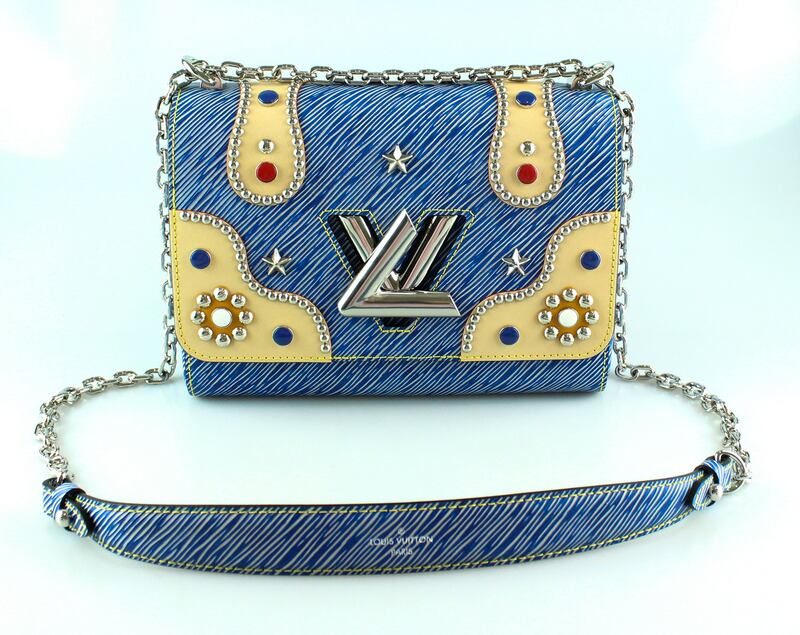How do you tell the difference between a designer handbag and a counterfeit? In Designer Exchange in Exchequer Street, Co Dublin, owner Paddy Coughlan pulls out a preowned Louis Vuitton Neverfull canvas bag, one of the brand’s bestselling styles and points out the stitching on the cowhide leather handle trims. “The symmetry of the stitching is very important,” he says. “There should be an even number of stitches on each side and each stitch should be the same length. A lot of fakes will miss out on that. Other details like the metal used have to be right too.” Designed in 2007 the style has retained its popularity and new is currently priced at a hefty €940. “If I had a hundred [secondhand] Neverfulls by Louis Vuitton today I would have none left by 8pm,” he says.
There are many who believe that Coughlan knows more about designer bags than Kim Kardashian, though his normal portmanteau is a plain black everyday nylon affair packed with files. The founder of the two Designer Exchange shops in Dublin admits that as a former restaurant manager who worked for Gamestop Technology buying and selling games and videos, the handbag industry was an “alien” one until he started to discuss ideas with a business partner.
“I had some reference measures however, because the eldest of my five sisters earns her money and has no problem spending it on bags from Louis Vuitton or Chanel while my youngest sister has aspirations to do that. I started to think, ‘why not make luxury more affordable and bring a little bit of old school customer service to it?’” he says.

His concept of trade in, trade up started when he opened his first shop with a partner in Dawson Street in 2012 after he took redundancy from Gamestop. “I was ignorant of the luxury market, but off we went hunting for Celine, Chanel, Louis Vuitton – with a call to action using social media to say that we will buy and trade your bags”.
The response was immediate. The day we met he was in the middle of the annual stock take and downstairs the place was choc a bloc with bags from Gucci, Chanel, Michael Kors, Givenchy, Louboutin, Louis Vuitton and other well known names, some like new, others hardly worn, but all traded in for cash or an upgrade.
Establishing authenticity, however, was paramount, a key to his business and establishing his reputation. That involved intensive research online like PurseBlog (“a massive source of information”), using teams of assessors coupled with a trip to Turkey to find and take apart “super fakes” to see how they were made.
We have often turned away perfectly good items that are fake
“The first question you have to ask (if buying a second hand bag) is how to prove authenticity – we issue an authenticity certificate with every piece we sell.” He has learnt, for instance, that there are 28 different points to check in a Chanel bag and that serial numbers can be counterfeited “and we have often turned away perfectly good items that are fake.”
The shop’s concept of trade in, trade up gives customers with bags to sell three options; one being consignment which means getting the highest price but leaving the bag until it sells; the second is trading in the bag for another model at a higher price and the third is paying the customer outright with the amount agreed in a bank transfer within 14 days. “In late 2014 we realised that we couldn’t keep our top sellers in stock, but people were embracing the idea of the trade in, trade up concept. We wanted to make what was unattainable attainable.” Terms can be flexible – “we ask for a 30 per cent deposit and twelve weeks to pay it off.”

He has had some remarkable success stories like an Irish barrister who bought a 120-year-old Louis Vuitton steamer trunk at an auction in Castle Durrow for €350, then asked Coughlan for €500. “I found out that it was worth €52,000 so he has kept it, encased it in protective plastic for his daughter and in eighteen years time, it will set her up,” he says. (The barrister has since become a regular customer.) Another star sale was a Hermes ostrich Birkin bag which he sold for €18,000 to an Australian art dealer in London, who didn’t want to pay import duties back home. Coughlan who currently has five Birkins in stock, personally delivered the bag to him in London.
This global resale economy, fuelled by changing consumer attitudes, is growing at a rapid pace and will be worth $41 billion by 2022 according to the Thred Up consignment site. Bags are the most popular preowned items to buy online with resale positioning itself as antidote to fast fashion and millennials being the thriftiest of shoppers. They buy resale items more than any other group according to a recent report in Vogue. In an era of sustainability, circularity can be a big driver. Coughlan’s experience bears this out as many bags come back for resale.

“Handbag trends change a lot more quickly than mainline fashion – but we don’t buy into trends,” he says. He does acknowledge, however, that 80 waistbags formerly called bumbags are currently in vogue and that “everybody wants a crossbody”. Investment pieces, he says, remain Chanel (its classic 2.55 flap bag remains the most popular by far with those on the farfetch website, for instance, priced from €3,000to €10,000), Dior’s saddle bag, Gucci and St Laurent “and Hermes bags increase in value every year. It takes the atelier 24 hours to make one bag. There is a lot of pride in craftsmanship and Fendi is also handcrafted while Michael Kors bags are machine made.” He cites the value of others like Furla and Bridge at one level with Prada, Bottega Veneta and Mulberry at another but says there’s interest also in Pauric Sweeney and a now defunct Irish brand called Chesneau.
“It’s all about style and of course there is an element of showing off, but you could have a worse addiction than a passion for bags and this business is recession proof because there is money in people’s pockets before they come in with their bags. People are savvier these days and look for value. Last December we were selling around 30to 50 bags a day, our most successful week ever,” he smiles.











